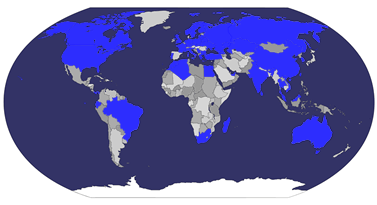 The Palace of Mysoreis a palace situated in the city of Mysore, southern India. The palace was commissioned in 1897, and its construction was completed in 1912. It is now one of the most famous tourist attractions in Mysore.
The Palace of Mysoreis a palace situated in the city of Mysore, southern India. The palace was commissioned in 1897, and its construction was completed in 1912. It is now one of the most famous tourist attractions in Mysore.It is the official residence of Wodeyar's -the erstwhile royal family of Mysore, and also houses Two durbar halls (ceremonial meeting hall of the royal court).
Mysore Palace is one of the most magnificent buildings. The interior of the Palace is equally worth a visit, for its spacious halls, called Mantaps, paintings and architectural beauty. The palace is an excellent combination of Indo-Saracenic architecture. The domes and the outside construction are of Muslim architecture. But the interior of the Palace is a fine example of Hindu architecture. Together, it is an aesthetic blend of Hindu and Muslim architecture. Though the present Palace is little over a century old, there is clear evidence to show that there existed a royal structure even when the two Yadu dynasty princes, Yaduraya and Krishnaraya, came to Mysore in 1399 A.D.
 Halebiduis located in Hassan District, Karnataka, India. Halebidu (which was previously called Dorasamudra or Dwarasamudra) was the regal capital of the Hoysala Empire in the 12th century. It is home to one of the best examples of Hoysala architecture in the ornate Hoysaleswara and Kedareswara temples.
Halebiduis located in Hassan District, Karnataka, India. Halebidu (which was previously called Dorasamudra or Dwarasamudra) was the regal capital of the Hoysala Empire in the 12th century. It is home to one of the best examples of Hoysala architecture in the ornate Hoysaleswara and Kedareswara temples.It was built by Ketamalla a minister of Vishnuvardhana the Hoysala ruler who also built the Belur temple and the Mahabaleshwar temple at Chamundi Hills near Mysore. Halebidu was sacked by the armies of Malik Kafur in early fourteenth century, after which it fell into a state of disrepair and neglect.
The Hoysaleswara temple enshrines Hoysaleswara and Santaleswara. Hoysaleswara is named after the builder Vishnuvardhana Hoysala and Santaleswara after his wife, Queen Santala. The sancta are built on a stellar plan, with a sukhanasi, navaranga and Nandi Mandapa. Each of these (temples) resembles the Belur Chennakesava temple in plan.
The Hoysaleswara temple is a masterpiece, studded with a profusion of carvings. Thousands of figures appear on its walls. The basement of the temple has the most richly sculptured friezes. Horsemen charge, war elephants charge, all in stone. Scenes from the Ramayana and the Mahabharata add to the grandeur.







 Blue
Blue  Maroon
Maroon 













































No comments:
Post a Comment